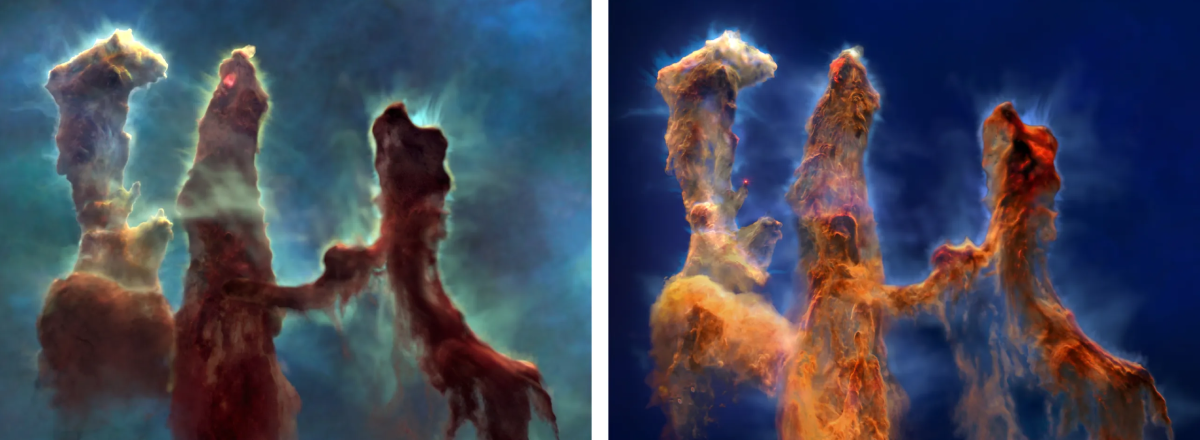NASA's New 3D Visualization Takes You Through the Pillars of Creation
The visualization highlights the dynamic and three-dimensional nature of these pillars, showing them in both visible light, as seen by Hubble, and in infrared light, as captured by Webb.

NASA has unveiled a stunning new 3D visualization of the Pillars of Creation, combining the powers of the Hubble Space Telescope and the James Webb Space Telescope. This new perspective brings to life the intricate details of the iconic cosmic structures where stars are born, located about 6,500 light-years away in the Eagle Nebula.
The visualization, a culmination of data from both telescopes, offers a journey through the towering columns of cool molecular hydrogen and dust. These structures are constantly shaped by the ultraviolet light from young, hot stars nearby, sculpting the nebula into what has been dubbed the Pillars of Creation. The visualization highlights the dynamic and three-dimensional nature of these pillars, showing them in both visible light, as seen by Hubble, and in infrared light, as captured by Webb.
This visualization allows viewers to "fly" around and between the pillars, providing a sense of their massive scale and the changes in appearance between different wavelengths of light. This helps illustrate why astronomers use multiple space telescopes to gain a fuller understanding of celestial objects.
The tallest of these pillars extends across three light-years, which is three-quarters of the distance between our Sun and the nearest star. These pillars are not only spectacular to look at but are also regions of active star formation. Embedded within these columns are embryonic stars, and protrusions larger than our solar system, from which new stars may eventually emerge.
The video uses real observational data rather than artistic interpretations. This authentic approach ensures that the audience is getting a scientifically accurate representation of one of the most fascinating phenomena in our galaxy.

